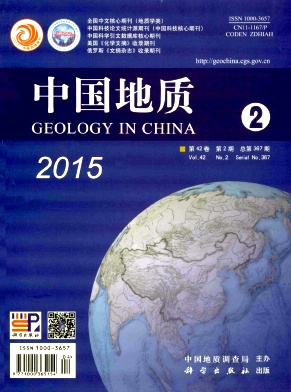HUANG Zeng-bao1, 2, ZHENG Jian-ping1, LI Bao-hua3, WEI Zhi-jun2, QI Wei2, CHEN Xu2. Geochronology and geochemistry of Yemashan batholiths in western Central Qilian and its tectonic implications[J]. Geology in China, 2015, 42(2): 406-420.
| Citation: |
HUANG Zeng-bao1, 2, ZHENG Jian-ping1, LI Bao-hua3, WEI Zhi-jun2, QI Wei2, CHEN Xu2. Geochronology and geochemistry of Yemashan batholiths in western Central Qilian and its tectonic implications[J]. Geology in China, 2015, 42(2): 406-420.
|
Geochronology and geochemistry of Yemashan batholiths in western Central Qilian and its tectonic implications
-
1. Faculty of Earth Science, China University of Geosciences, Wuhan 430074, Hubei, China; 2. Geological Survey of Gansu Province, Lanzhou 735000, China; 3. College of Earth Science, Chengdu University of Technology, Chengdu 610059, Sichuan, China
-
Abstract
Abstract: Located in western Central Qilian Mountain, the Yemashan batholiths are composed of early pluton (granodiorite and porphyritic monzogranite) and late pluton (monzogranite). U-Pb age determination of zircon by LA-ICPMS shows that the early pluton of Yemashan batholiths was intruded at (469.0±1.3) Ma, and the late pluton was intruded at (450.0±1.0) Ma. Compositionally, the early pluton of Yemashan batholiths has SiO2 values ranging from 59.8% to 64.2%, K2O/Na2O ratios higher than 1, and molar A/NKC ratios from 0.8 to 1.0, indicating typical metaluminous granitoid. The pluton is depleted in Ba, Nb, Ta, Sr, P and Ti, and enriched in Rb, U and Th, and has total REE content ranging from 97.73×10-6 to 185.76×10-6, (La/Yb)N from 5.57 to 12.47, and LREE/HREE from 7.7 to 11.3. The chondrite-normalized REE patterns of the pluton exhibit enrichment of LREE and depletion of HREE, with moderate negative Eu anomalies (δEu=0.66-0.89). The late pluton of Yemashan batholiths has SiO2 ranging from 69.8% to 76.5%, K2O/Na2O from 1.2 to 1.7, and molar A/NKC from 0.8 to 1.0, implying weakly peraluminous granitoid. It also shows enrichment of Rb, U and Th, and depletion of Ba, Nb, Ta, Sr, P and Ti, with ∑REE from 78.97×10-6 to 244.92×10-6, and (La/Yb)N from 5.57 to 12.47. The chondrite-normalized REE patterns of the pluton exhibit enrichment of LREE and depletion of HREE, with pronounced negative Eu anomalies (δEu=0.11-0.24). The petrological and geochemical characteristics indicate that the early pluton of Yemashan batholiths could represent typical I-type granite formed in a subduction orogenic setting. The late pluton should be assigned to highly fractionated I-type granite formed in a post-collisional orogenic setting. On the basis of these features in combination with the tectonic locations of granite occurrence and field observation data, the authors hold that southward and northward subductions of the North Qilian oceanic plate took place in the Early Paleozoic, during which the southward subduction and collision resulted in the formation of Yemashan batholiths.
-

-
-
Access History







 DownLoad:
DownLoad: